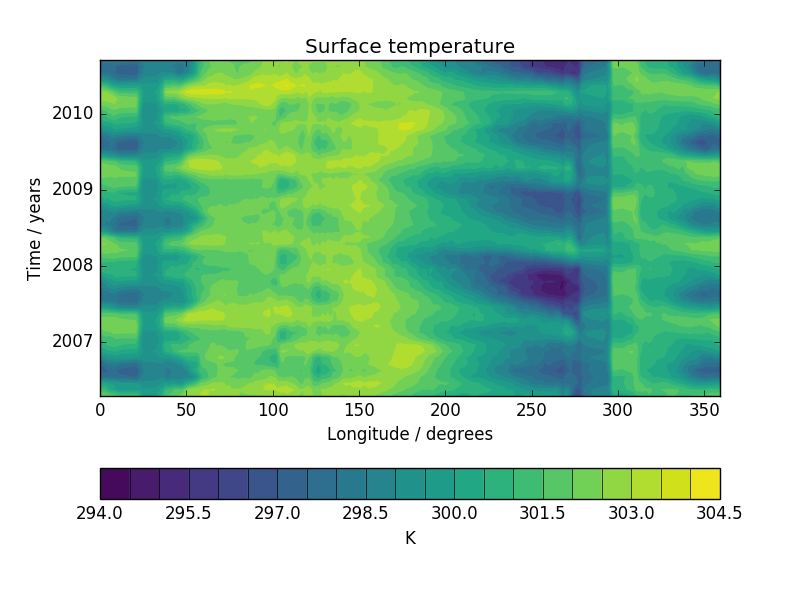This example demonstrates the creation of a Hovmoller diagram with fine control over plot ticks and labels. The data comes from the Met Office OSTIA project and has been pre-processed to calculate the monthly mean sea surface temperature.
"""
Hovmoller diagram of monthly surface temperature
================================================
This example demonstrates the creation of a Hovmoller diagram with fine control
over plot ticks and labels. The data comes from the Met Office OSTIA project
and has been pre-processed to calculate the monthly mean sea surface
temperature.
"""
import matplotlib.pyplot as plt
import matplotlib.dates as mdates
import iris
import iris.plot as iplt
import iris.quickplot as qplt
def main():
# Enable a future option, to ensure that the netcdf load works the same way
# as in future Iris versions.
iris.FUTURE.netcdf_promote = True
# load a single cube of surface temperature between +/- 5 latitude
fname = iris.sample_data_path('ostia_monthly.nc')
cube = iris.load_cube(fname,
iris.Constraint('surface_temperature',
latitude=lambda v: -5 < v < 5))
# Take the mean over latitude
cube = cube.collapsed('latitude', iris.analysis.MEAN)
# Now that we have our data in a nice way, lets create the plot
# contour with 20 levels
qplt.contourf(cube, 20)
# Put a custom label on the y axis
plt.ylabel('Time / years')
# Stop matplotlib providing clever axes range padding
plt.axis('tight')
# As we are plotting annual variability, put years as the y ticks
plt.gca().yaxis.set_major_locator(mdates.YearLocator())
# And format the ticks to just show the year
plt.gca().yaxis.set_major_formatter(mdates.DateFormatter('%Y'))
iplt.show()
if __name__ == '__main__':
main()
(Source code, png)
